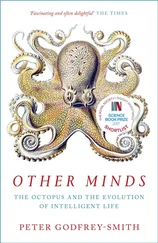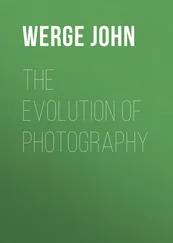Carroll Quigley - The Evolution of Civilizations
Здесь есть возможность читать онлайн «Carroll Quigley - The Evolution of Civilizations» весь текст электронной книги совершенно бесплатно (целиком полную версию без сокращений). В некоторых случаях можно слушать аудио, скачать через торрент в формате fb2 и присутствует краткое содержание. Год выпуска: 101, Издательство: Liberty Fund Inc., Жанр: Старинная литература, на английском языке. Описание произведения, (предисловие) а так же отзывы посетителей доступны на портале библиотеки ЛибКат.
- Название:The Evolution of Civilizations
- Автор:
- Издательство:Liberty Fund Inc.
- Жанр:
- Год:101
- ISBN:нет данных
- Рейтинг книги:5 / 5. Голосов: 1
-
Избранное:Добавить в избранное
- Отзывы:
-
Ваша оценка:
- 100
- 1
- 2
- 3
- 4
- 5
The Evolution of Civilizations: краткое содержание, описание и аннотация
Предлагаем к чтению аннотацию, описание, краткое содержание или предисловие (зависит от того, что написал сам автор книги «The Evolution of Civilizations»). Если вы не нашли необходимую информацию о книге — напишите в комментариях, мы постараемся отыскать её.
Like the course, The Evolution of Civilizations is a comprehensive and perceptive look at the factors behind the rise and fall of civilizations.
Quigley defines a civilization as "a producing society with an instrument of expansion." A civilization's decline is not inevitable but occurs when its instrument of expansion is transformed into an institution—that is, when social arrangements that meet real social needs are transformed into social institutions serving their own purposes regardless of real social needs.
The Evolution of Civilizations — читать онлайн бесплатно полную книгу (весь текст) целиком
Ниже представлен текст книги, разбитый по страницам. Система сохранения места последней прочитанной страницы, позволяет с удобством читать онлайн бесплатно книгу «The Evolution of Civilizations», без необходимости каждый раз заново искать на чём Вы остановились. Поставьте закладку, и сможете в любой момент перейти на страницу, на которой закончили чтение.
Интервал:
Закладка:
The most popular explanation of the causes of historical change and especially of the rise and fall of civilizations has been by means of some biological analogy in which a people, once young and vigorous, were softened and weakened by rising standards of living, or by a loss of the ideology of hard work and self-sacrifice that had made their rise possible. In most cases little or no effort has been made to correlate this process of change with the various stages through which the civilization was said to have passed. In some cases, this "softening of fiber" theory has been presented in a more naive form by a simple biological analogy in which civilizations, like man himself, were felt to pass through a simple sequence of youth, maturity, and old age. In many cases no real explanation of the process of change has been given at all, the theorists in question being satisfied with attaching names to the various stages of historical change. Giovanni Battista Vico, for example, saw the history of each people as a process by which barbarian vigor slowly developed into rationalism, the period of greatest success being merely the middle period when the two qualities of vigor and rationality were in a fruitful, precarious, and temporary balance, while the decline was due to the final triumph of rationalism over energy. In the late nineteenth century, as biological sciences became more influential, these basic ideas were reserved with varying quantities of biological sauces. The Russian thinker Nikolai Danilevsky attributed the earlier period of vigor to biologic mixture of peoples, and attributed the intermediate ages of greatest achievement to the rise of a state organization that could direct such energies into more productive channels. The final stage of decay is not clearly explained but seems to be attributed to some process of political institutionalization not too remote from the explanation offered here.
At the turn from the nineteenth to the twentieth century, the influences of Darwinian thinking became dominant in theories of civilization dynamics. W. M. Flinders Petrie in 1911 offered a Darwinian version of the theories of earlier writers such as Danilevsky: an earlier period of struggle, based on the vigorous energy of barbarian intruders, was gradually weakened by the enjoyment of rising standards of living which weakened "strife." Enunciating the general rule, "There is no advance without strife," Petrie pictured each cycle as an accelerating decay resulting from a decrease in "strife." This point of view, generally accepted by many of the earlier theorists on this subject, saw the later stages of any civilization as a period of decreasing strife or violence, a conclusion which seems to be sharply at variance with the facts.
To Oswald Spengler, one of the most famous of modern writers on this subject, a similar pattern was evident. He discerned in each people an earlier stage of vigorous creativity that he called "culture" and a later stage of weakening moral fiber and devotion to selfish physical comforts that he called "civilization." As is usual among writers on this subject, no real explanation was provided for this loss of motion, although the pattern was applied to ten different "cultures."
The most famous of recent writers on this subject, Arnold J. Toynbee, has produced the most voluminous and, in spite of its sprawling organization, most satisfactory theory of these processes. He is still strongly influenced by Darwinian biology, and attributes rise and fall of civilizations to the "challenge and response" to "the struggle for existence." In spite of his many improvements over earlier writers, especially in regard to the units to which this pattern applies and the stages through which the pattern takes each unit, Toynbee's theories have several of the prevalent inadequacies of earlier writers, especially in his failure to correlate the stages of change with the process of change and, above all, in his failure to explain why a civilization which has been "responding" to "challenges" successfully for centuries gradually ceases to do so, and decays.
Most of the earlier writers derived their patterns from the study of a relatively few units, and generally based their interpretations very largely on the Greco-Roman experience in Classical antiquity. This reliance on the culture that most of us know best is, of course, to be expected, but has been unfortunate, since the pattern of rise and fall in Classical antiquity is not completely typical, as can be seen from the difficulty most writers have had in deciding whether the Greeks and Romans should be treated separately or together.
Vico derived his pattern from only two examples, Roman and Christian cultures, but most later writers had information, however vague, on a much greater number of cases. Many had no clear idea of the unit we call "civilization," and they confused peoples, political units, societies, and even religions in an indiscriminate fashion, greatly increasing the difficulty of finding patterns of change. Danilevsky spoke of ten historical "types," to which he added Russia as an eleventh in the future. In general, his units were linguistic groupings, so that the Greeks and Romans were treated as separate units. Spengler also spoke of ten, but his units were different from Danilevsky's and were made very ambiguous in some cases by being based on spiritual outlooks, such as his famous conceptions of Apollonian (Classical), Faustian (Western), and Magian (post-Classical Near Eastern) cultures. Toynbee saw about two dozen civilizations, not much different from those accepted in this present book.
The pattern of change in civilizations presented here consists of seven stages resulting from the fact that each civilization has an instrument of expansion that becomes an institution. The civilization rises while this organization is an instrument and declines as this organization becomes an institution.
By the term "instrument of expansion"we mean that the society must be organized in such fashion that three things are true : (1) the society must be organized in such a way that it has an incentive to invent new ways of doing things; (2) it must be organized in such a way that somewhere in the society there is accumulation of surplus—that is, some persons in the society control more wealth than they wish to consume immediately; and (3) it must be organized in such a way that the surplus which is being accumulated is being used to pay for or to utilize the new inventions. All three of these things are essential to any civilization. Taken together, we call them an instrument of expansion. If a producing society has such an organization (an instrument of expansion), we call it a civilization, and it passes through the process we are about to describe. Before we describe this process, however, we should be certain we understand the nature of an instrument of expansion.
The three essential parts of an instrument of expansion are incentive to invent, accumulation of surplus, and application of this surplus to the new inventions. Economists might call these three "invention," "saving," and "investment," but the terms used by economists are generally so ambiguous to noneconomists that we hesitate to use them. "Incentive to invent" is sometimes difficult for students to grasp because they assume that all societies are equally inventive, or that "necessity is the mother of invention," or that invention is somehow related to innate, hereditary biological talent (so that there are "inventive races" and "noninventive races"). None of these things is true. Some societies, like Mesopotamian civilization or our own Western civilization, are very inventive. Others, like many primitive tribes, or civilizations like the Egyptian, are very uninventive. Nor does "necessity" have much to do with inventiveness. If it did, those peoples who are pressed down upon the subsistence level, or even below it, in their standards of living, like some of the Indian tribes of the Matto Grosso, would be very inventive, which they are not. Or, if invention were in any way related to necessity, the poverty-stricken fellahin of Egypt or Trans-Jordan or the equally hard-pressed coolies of China or the peasants of India would have devised some new and helpful methods for exploiting their available resources. This is far from being the case. Or, again, if biologically inherited talent had anything to do with inventiveness we would not have seen the great decrease in invention by the Chinese in the last thousand years, or the decrease in inventiveness among Anglo-Saxon Americans in the last hundred years, or the sudden appearance of inventiveness among noninventive peoples of eastern European stock when they migrated to America. Inventiveness depends very largely on the way a society is organized. Some societies have powerful incentives to invent, because they are organized in such a way that innovation is encouraged and rewarded. This was true of Mesopotamian civilization before 2700 B.C., of Chinese civilizations before A.D. 1200, and of Western civilization during much of its history. On the other hand, many societies are organized so that they have very weak incentives to invent. Suppose that a primitive tribe believes that its social organization was established by a deity who went away leaving strict instructions that nothing be changed. Such a society would invent very little. Egyptian civilization was something like this. Or any society that had ancestor worship would probably have weak incentives to invent. Or a society whose productive system was based on slavery would probably be uninventive, because the slaves, who knew the productive process most intimately, would have little incentive to devise new methods since these would be unlikely to benefit themselves, while the slaveowners would have only a distant acquaintance with the productive processes and would be reluctant to invent any new methods that might well require the ending of slavery for their successful exploitation. For these reasons, slave societies, such as Classical civilization or the Southern states of the United States in the period before 1860, have been notoriously uninventive. No major inventions in the field of production came from either of these cultures. The significance of this can be realized when we recall that at the very time that the South was inventing so little, the North, and especially the people of the Connecticut River Valley, were passing through one of the greatest periods of invention in history (cotton gin, mass production and interchangeable parts, steamboat, screw propeller, revolver, electric motor, vulcanizing rubber, sewing machine, anesthesia, and so forth). "Accumulation of surplus" means that some persons or organizations in the society have more wealth passing through their control than they wish to use immediately or in the "short run." This is so necessary to expansion that it means that some persons must have more than they need, even if others must have less than they need. If a society containing 100 persons is producing 100 square meals a day, it would, perhaps, be "just" for each person to obtain one meal a day, but such a distribution would never allow the society to increase its production of meals except by temporary and accidental increases called "windfalls." If, however, the distribution of square meals in that society is organized so that fifty persons get only half a meal a day, twenty-five persons get one meal a day each, and twenty-five persons get two meals a day each, it might be possible for the society to increase its production of square meals. This could be done if someone invented a better way of producing square meals and if the twenty-five persons who get two meals each a day, consumed only one and a half meals each day and gave the surplus of twelve and a half meals each day to twenty-five of the fifty persons who had only half a meal each in return for their efforts in making the new, more productive, invention. This redistribution of meals to obtain the use of a new invention is what we mean by "investment," the third essential element in any instrument of expansion. We thus have three possible ways in which the 100 meals produced by this society could be distributed. They could be written as follows:
Читать дальшеИнтервал:
Закладка:
Похожие книги на «The Evolution of Civilizations»
Представляем Вашему вниманию похожие книги на «The Evolution of Civilizations» списком для выбора. Мы отобрали схожую по названию и смыслу литературу в надежде предоставить читателям больше вариантов отыскать новые, интересные, ещё непрочитанные произведения.
Обсуждение, отзывы о книге «The Evolution of Civilizations» и просто собственные мнения читателей. Оставьте ваши комментарии, напишите, что Вы думаете о произведении, его смысле или главных героях. Укажите что конкретно понравилось, а что нет, и почему Вы так считаете.










